Venus flytraps are a fascinating plant to care for, but they are particular about watering because they cannot be watered with any water; distilled water is best for this carnivorous plant. Fortunately, we are here to show you how to prepare distilled water for your Venus flytraps. Let's dive in!
Here are the steps for making distilled water for your Venus flytraps:
- Gather all the necessary materials
- Fill the pot halfway with water
- Place your glass bowl in the large pot
- Turn the burner on
- Cover the pot with a glass lid
- Put the ice cubes or ice packs on top of the glass lid
This article outlines how to make distilled water for Venus flytraps. We will also discuss what other kinds of water you can give to your plants, how frequently you should water, especially during the dormant season, and how to tell if you overwater or underwater your Venus flytraps. Let's begin!
How To Make Distilled Water For Venus Fly Trap
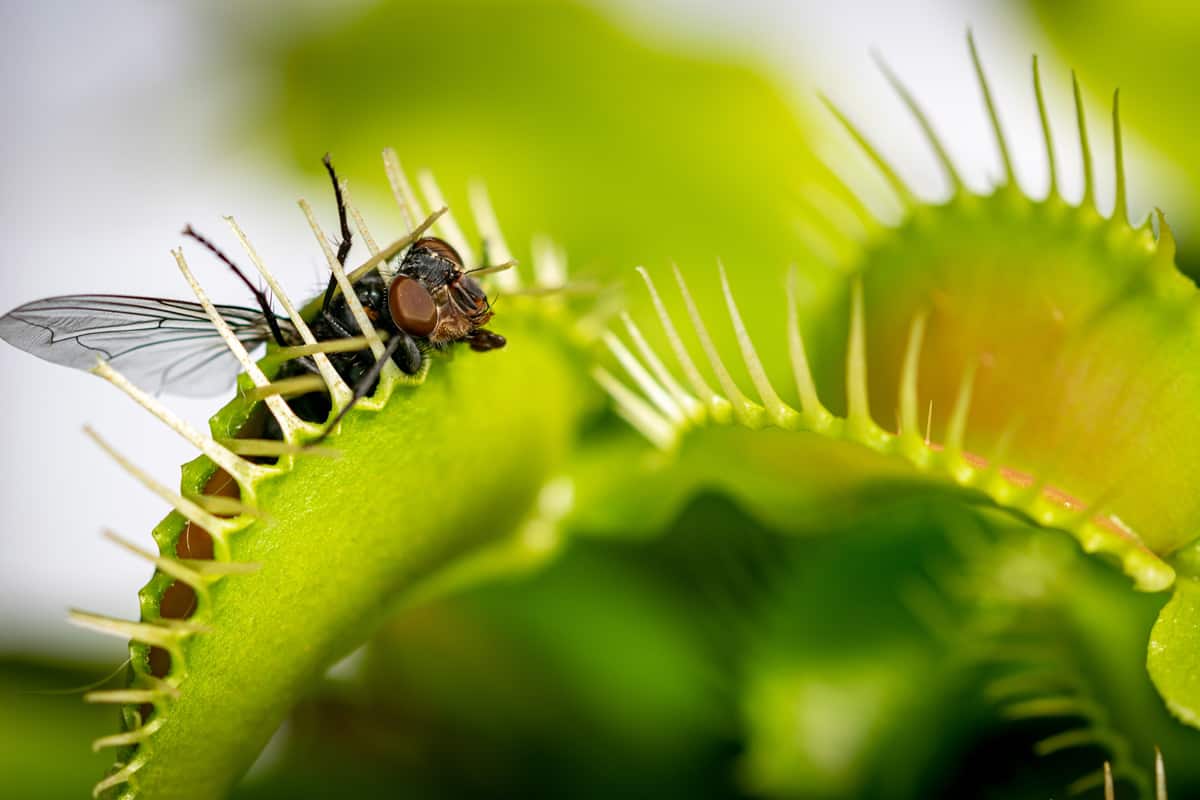
Follow these steps to make distilled water for your Venus flytrap:
Step 1-Gather All Of The Necessary Materials
A large pot with a curved lid, a thick glass bowl, or another container large enough to fit inside the pot, and ice cubes or an ice pack are all required.
Step 2-Fill The Pot Halfway With Water
Fill your large pot halfway with water. You can use tap water, rainwater, or water from a stream.
Step 3-Place Your Glass Bowl In The Large Pot
Place the large pot over a burner on the stove. Then, add the glass bowl to the large pot. Airflow is critical to circulate water vapor inside the large pot.
Allow enough space around the smaller pot, both on its edges and between it and the top of the larger pot.
Click to see this Large Pot on Amazon.
Step 4-Turn The Burner On
Set the burner to medium-high heat. Running at a greater temperature will not result in a better yield, but it will cause the cold side of the lid to warm up faster and make general equipment handling more difficult.
Step 5-Cover The Pot With A Glass Lid
Cover your large pot with a glass lid upside-down. The condensed distilled water will drip down to the middle of the lid and into the smaller pot if the lid is flipped. There must be no holes in your glass lid.
If there is a hole, it must be covered or sit on the pot's outside. The water that melts from the ice should not fall into your glass bowl.
Step 6-Put The Ice Cubes Or Ice Pack On Top Of The Glass Lid
When the water in the large pot begins to boil, place the ice on top of the glass lid.
The emerging steam will interact with the cold glass lid, cooling it and converting it into water droplets. Droplets will fall into the bowl. Any liquid that has dripped into the bowl has now been distilled.
What Other Kinds Of Water Should You Give Your Venus Flytrap?

The kinds of water you offer your Venus flytrap are more significant than how frequently you water Venus flytrap.
Aside from distilled, reverse osmosis or rainwater can water Venus flytraps. Venus flytraps are sensitive to minerals, so the water must be pure. Avoid bottled or tap water at all costs.
Distilled And Reverse Osmosis Water
Distilled reverse osmosis water is the safest choice when watering indoor carnivorous plants. The water is free of chemicals and salts, and the filtration or steaming kills any organisms that may be present.
A reverse osmosis system may be advantageous if you need more than a few gallons of clean water. This system can eliminate up to 98% of chlorine, bacteria, and other potentially dangerous things from water.
Rainwater
This alternative is completely free if you already have a system in place. Some people gather rainwater to water their plants in their homes.
If you use rainwater for Venus flytraps, ensure the water is still clean. Dust is acceptable.
However, if you collect rainwater through a pipe system in your roof and that roof is built of metal, the water may be hazardous for Venus flytraps.
How Often Should You Water A Venus Flytrap?
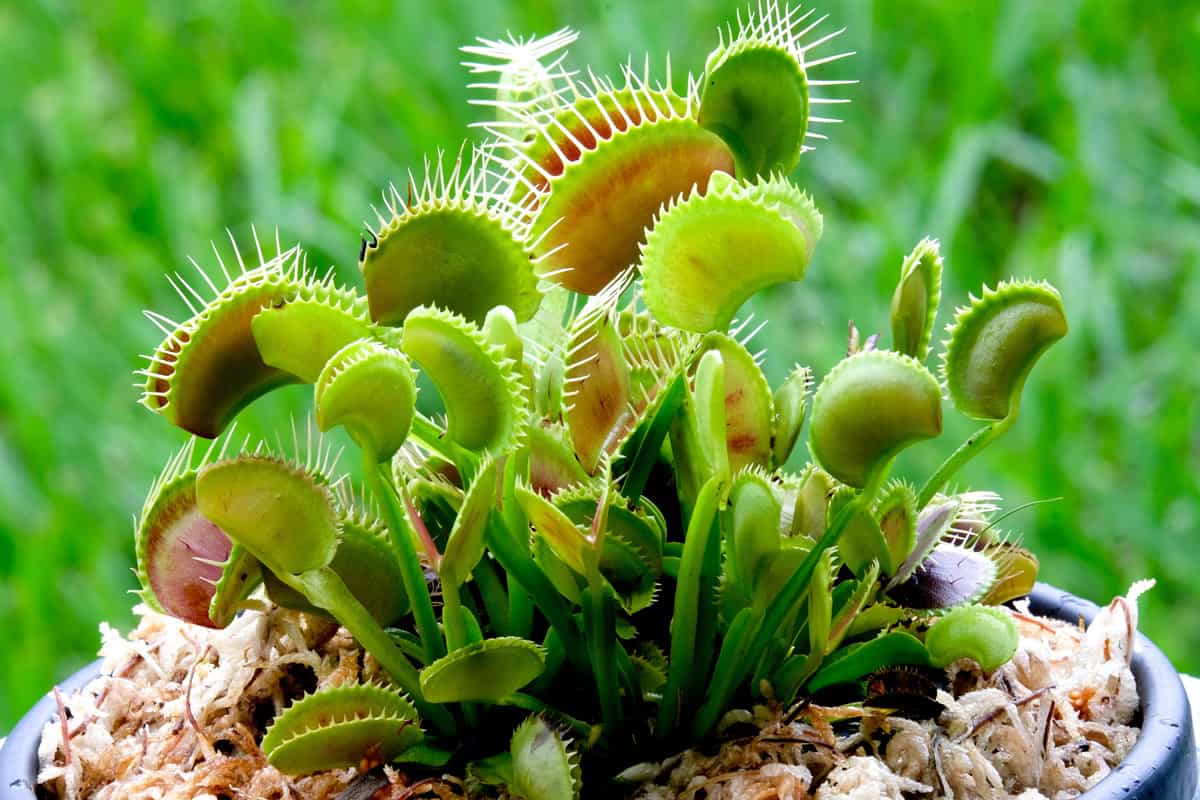
Knowing how frequently to water a Venus flytrap is critical to maintaining a healthy and strong plant. Venus flytraps require distilled or rainwater since they are sensitive to water with dissolved minerals, chlorine, or salts.
Watering periods might range from 10-14 days to every 2-3 days, depending on the season. The soil must be moist but not wet at all times.
They require watering when the soil is less moist but not completely dry. The water tray method is an efficient way to keep Venus flytraps healthy.
How Can I Tell If I'm Over Or Underwatering My Venus Flytrap?
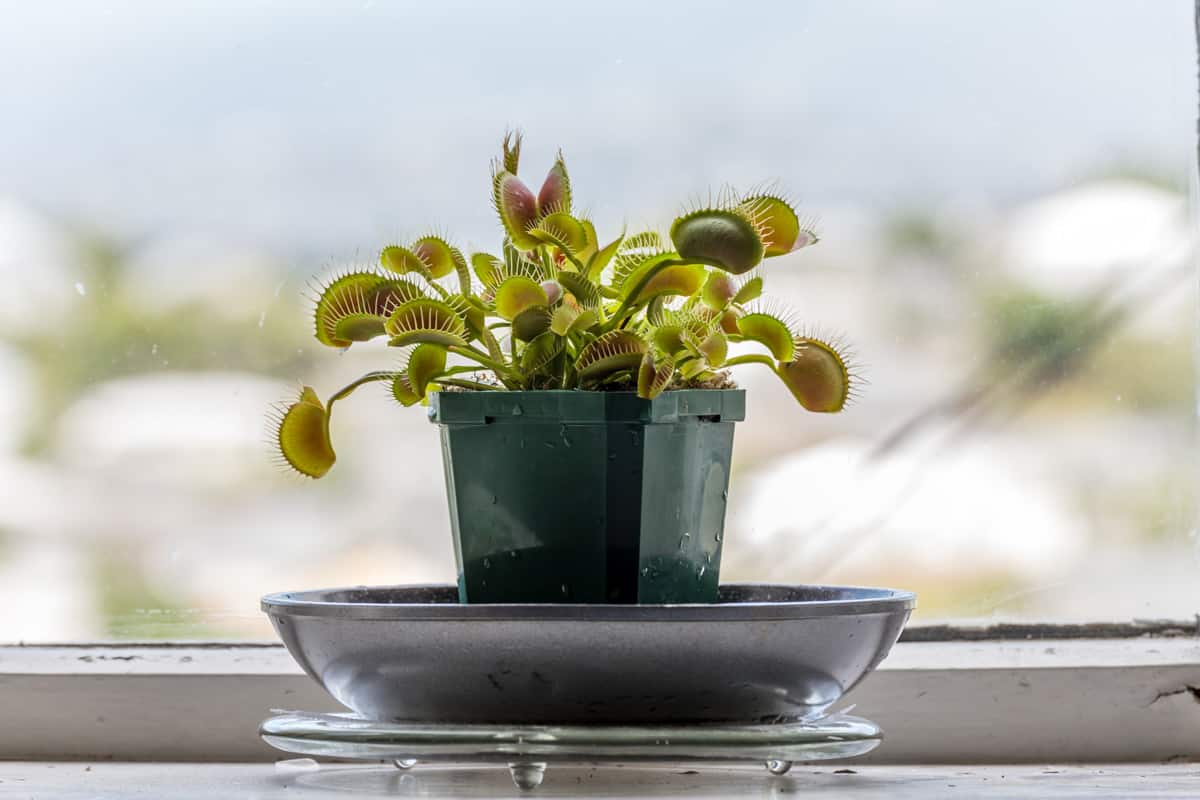
Overwatering or underwatering can both harm Venus flytraps. Overwatering, for instance, can result in root rot and waterlogging.
Conversely, underwatering can result in slowed development and a dry, fragile plant that may not survive the following few weeks. Brown spots under the leaves may appear if the soil becomes excessively dry.
Overwatering can cause the leaves to wilt because the plant cannot draw enough water into the stem.
Plant stems will weaken, and leaf tips may turn yellowish-green in color. This indicates that the plant strives to preserve energy by turning down photosynthesis.
This also means that the plant will not be able to generate new tissue, resulting in developmental problems. As a result, it is critical to examine the plant daily to verify that it is healthy and not in distress.
How Often Should You Water Dormant Venus Flytraps?
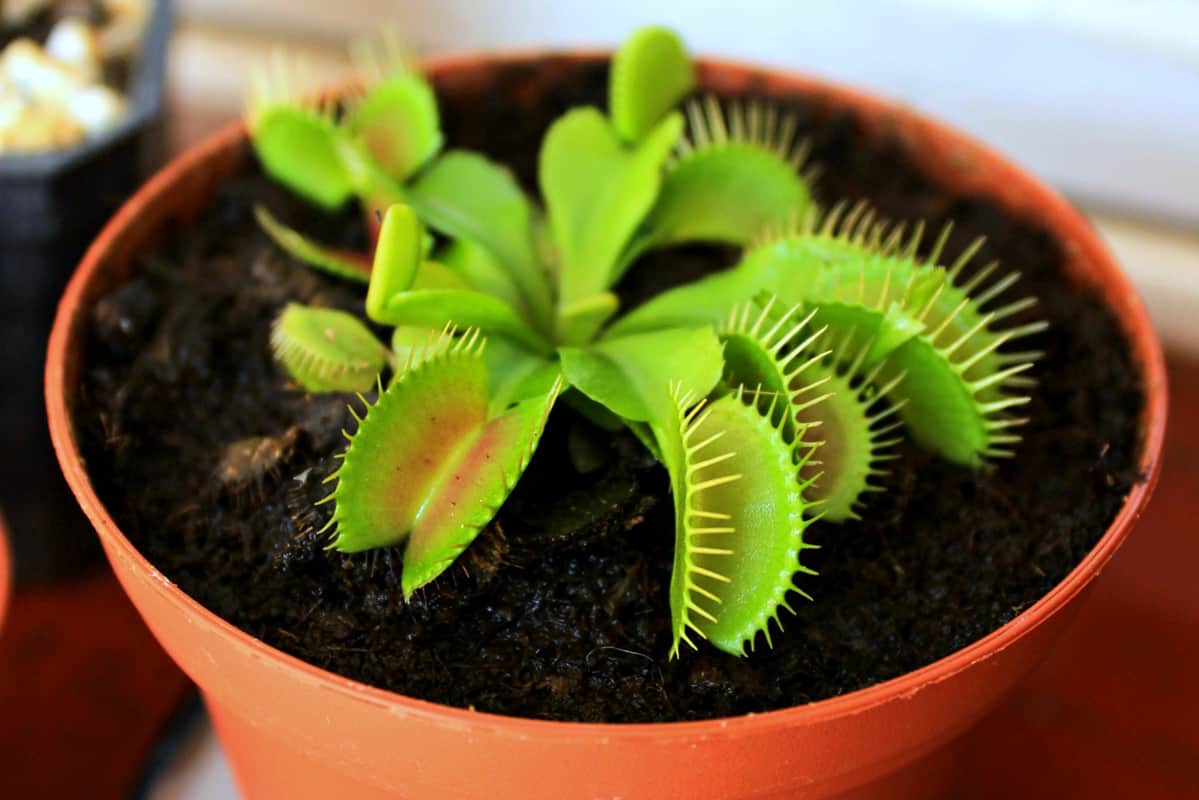
The plant's watering needs will change in the cold season as it reaches its dormant growth stage. Venus flytrap often conserves more water during this stage, requiring less watering.
![How To Make Distilled Water For Venus Fly Trap? [Step By Step Guide]](https://gardentabs.com/wp-content/uploads/2022/12/63.-How-To-Make-Distilled-Water-For-Venus-Fly-Trap.jpg)
During the winter dormancy, water the venus flytrap every two weeks. Depending on where you reside, you can check the soil's moisture level to estimate how frequently it needs to be watered.
Stick your forefinger into the soil about an inch below the surface to achieve this. The soil should be wet but not crumbly. If it is dry, give it a good watering.
Should You Put A Venus Flytrap In Water?

Venus flytraps require a constantly humid environment. Hence, they are commonly placed in water trays. However, many sources claim that Venus flytraps prefer not to be placed in stagnant water, which is correct.
Venus flytraps can sit in water. However, they should not be left in the same water for long periods. As a result, when placing them in a tray of water, the water level should never be higher than 1 inch.
Allowing Venus flytraps to sit in water waters, the plant from the bottom. The potting soil is gradually absorbing moisture, and the roots are growing stronger to reach the bottom of the pot and gain access to water.
What Are The Benefits Of Keeping Your Venus Flytrap In Water?
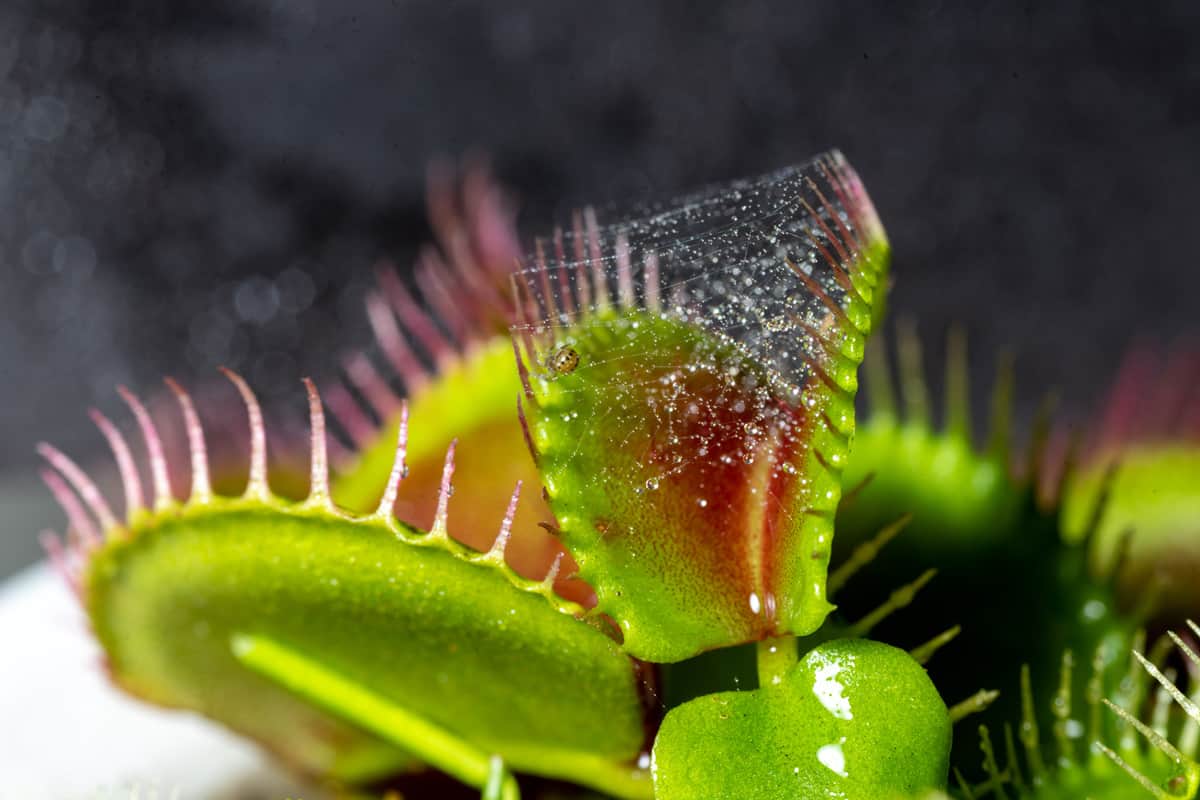
Watering Venus flytraps from the top or bottom is possible. Both strategies are efficient. Placing your plants in a tray of water can provide various advantages, including:
Avoid Overwatering
Almost every individual who has owned plants has been guilty of overwatering them at some point. Overwatering a plant is considerably easier than underwatering it.
Using the tray method, you are significantly less likely to overwater your venus flytrap.
Prevent Overheating
Keeping Venus flytraps in water helps to maintain the surroundings cool. These plants require sunlight, but too much heat might cause their leaves to burn.
Water pours into the roots and spreads throughout the leaves, enhancing humidity.
Prevent Soil Compression
Soil tends to compress when water is applied from the top. The soil does not compress instantly, but it does compact over time. Compacted soil prevents proper root growth and drainage.
What Are Some Tips For Watering Your Venus Flytrap From The Bottom?
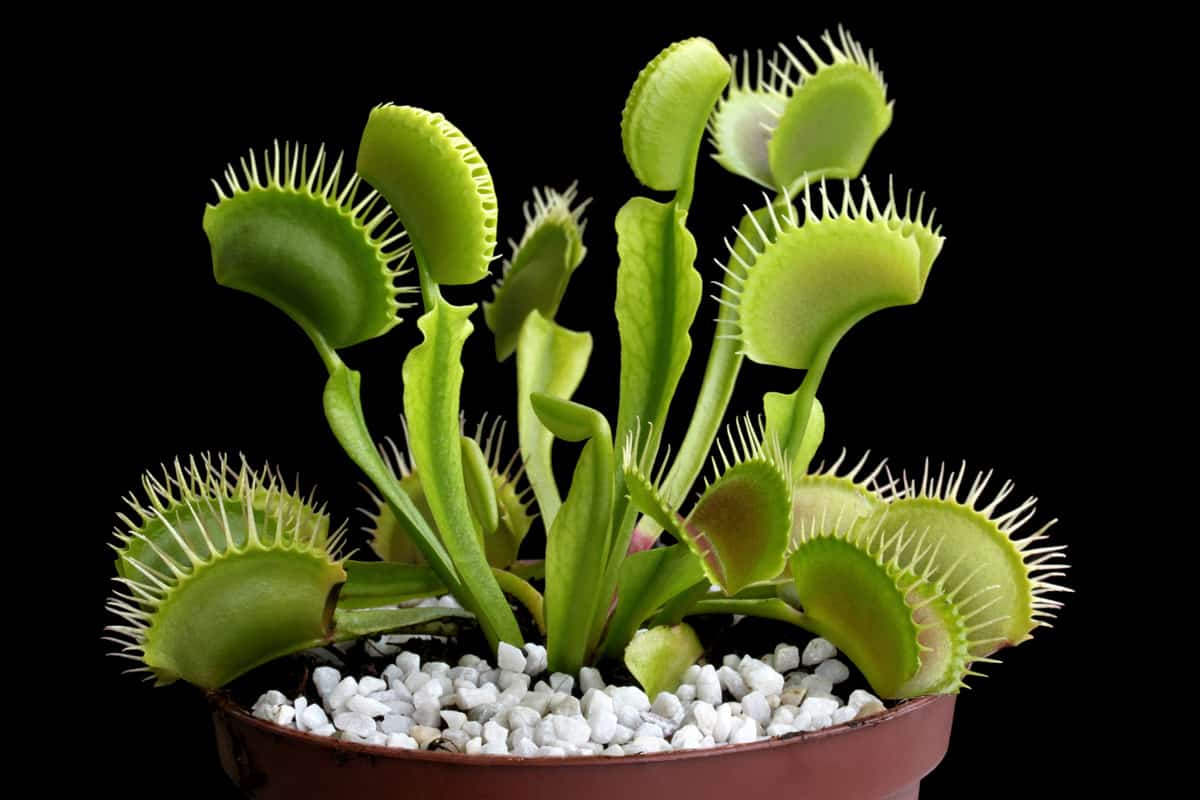
You've learned about the advantages of water Venus flytraps from the bottom. However, these advantages are only available if you follow the proper methods.
This is a list of helpful hints for properly watering your plants:
Use A Well Draining Soil
Venus flytraps need a humid atmosphere to develop, but the water in the potting media must constantly drain into the soil.
Use potting media comprising moss, sphagnum, peat, and a drainage agent for the best results. Perlite and sand are also excellent choices. They serve to aerate the soil and keep it from decaying.
Click to see this Sphagnum on Amazon.
Check The Soil Moisture Levels
Watering from the bottom is an effective strategy for keeping the soil consistently moist. Even so, the soil should never be soaked.
By pressing on the soil, you may determine its moisture content. Check that the soil is damp but not waterlogged.
Use Appropriate Pots
Venus flytraps can grow extremely long roots. Tall containers help Venus flytraps and encourage root growth. Long, deep pots can be used to pot mature Venus flytraps.
This depth gives the roots enough vertical space while also promoting growth.
To Finish
Since you already know how to make distilled water for your Venus flytraps, you should avoid allowing your soil to become dry or waterlogged.
Always remember not to water your Venus flytraps with tap water or any water that has not been cleaned and contains chemicals; instead, use distilled water, reverse osmosis water, or rainwater.
If you found this post helpful, check out these related articles:


